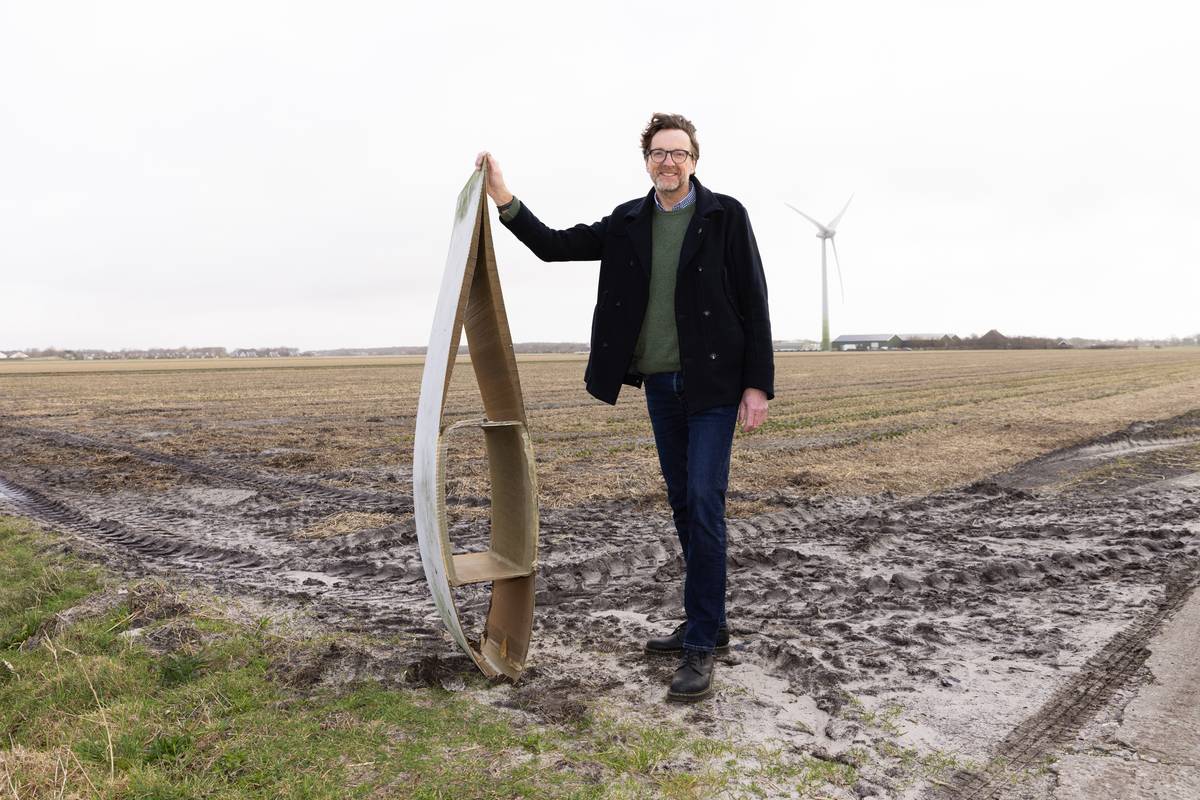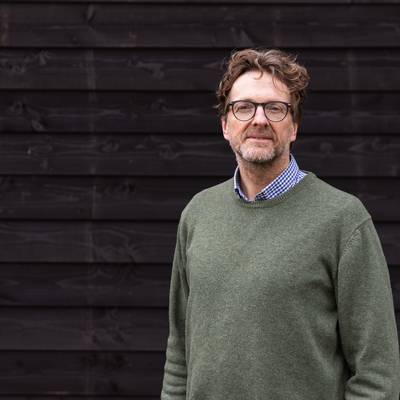Beginning of offshore wind farms
Everything is aimed at making the Netherlands fully circular and climate-neutral by 2050. Harald van der Mijle Meijer is a materials engineer and has been working in offshore wind research at TNO since 2007: "My first project was the Prinses Amalia Wind Park, completed in 2008, the second wind park realized in the Dutch North Sea. Since then, much has changed, with a greater focus on sustainability, circularity, and reuse." His passion for wind, sea, and sustainability has paid off for Harald. No two working days are the same, and he continues to learn. According to him, this is something that technicians should always do: "After my materials engineering studies at TU Delft, I joined the Royal Navy, where technology and innovation primarily revolve around performance. Now, technological developments go hand in hand with circularity, and the environmental impact is considered. From the beginning, I saw the growth and potential of the energy sector and the space for innovation. But before the time of the Prinses Amalia Wind Park, wind energy was generated onshore, and the wind turbines were designed accordingly. The proven onshore technology could not simply be duplicated offshore. It was an interesting period and a steep learning curve with many tests. This specific park will be decommissioned in 2028 and replaced with the latest wind turbine technology that meets the tightened goals, including circularity and sustainability."
Recycling as a business model
In addition to being an advisor, Harald is the portfolio manager for R&D in the research line 'Offshore Wind Parks': “We aim to make offshore wind energy more reliable, sustainable, efficient, and targeted. Eventually, moving away from the use of fossil fuels and raw materials means that we must largely or completely transition to sustainably generated electricity. We want to do this in a clean way, and circularity of materials plays a significant role. This involves two aspects: (new) recyclable designs and the recycling of current wind turbine blades. Together with Brightlands Materials Center (BMC), we have discovered a method for recovering and recycling composite fibers. In Europe alone, about 4 million tons of composite blade waste end up in landfills annually. The realization is carried out by a consortium of 18 partners throughout the supply chain. This innovation presents significant business opportunities, and we demonstrate that there is a business model for recycling and upgrading recovered materials such as composite fibers. The new material is once again entirely recyclable, and through a future tool, we will provide parties with optimal advice on dismantling wind parks and recycling components.”
-
TNO accelerates the energy transition in collaboration with partners from the knowledge sector, energy industry, businesses, and the government, aiming for a CO2-neutral Netherlands by 2050. Regarding wind energy, the development of a new generation of wind parks is a step in the right direction. In the North Sea, the areas of Nederwiek, Lagelanden, and Doordewind will be developed in the coming years, with a total production capacity of 21 gigawatts. The additional capacity released is twice the energy consumption of all Dutch households combined. TNO is researching and developing innovative technologies and methods for these new generations of wind turbines and wind parks. Innovations aim to increase the output of wind turbines, and TNO focuses not only on the design but also considers the entire wind park and its location.

New generation, new perspectives
TNO serves as a bridge between universities and industry by exchanging fundamental knowledge about the energy transition and renewable energy sources. Harald explains: "In addition to collaborations with multinational corporations, small and medium-sized enterprises (mkb’ers), knowledge institutions, and governments, we have a close partnership with universities. The new generation often brings surprising perspectives and ideas, which are incredibly valuable for accelerating the energy transition. We look beyond the industry and need to go beyond that point on the horizon. Our research considers all future scenarios, such as material scarcity or when turbines become too large. Sometimes, technology advances faster than we can handle, and it's wise to take a step back and optimize what we already have. Our partners assist in this process: we make something effective and responsible. This creates support throughout the entire chain."
Funding for circulariteit
Harald is critical of the scaling up of wind parks and turbines: "Simply making everything two or three times larger is not the solution. Wind parks placed closely together do not contribute to efficient energy generation. At TNO, we are paid for developing innovations and rely on subsidies. We undertake projects at both national and international levels. In the Netherlands, there is little to no funding available for recycling projects related to wind turbines. However, Europe has shown interest and provides well-founded programs for collaborative efforts, based on individual research. Circularity is more of a focus there than in the Netherlands. With over 3000 researchers at TNO, our national expertise in recyclable plastics, self-healing materials, and monitoring techniques is extensive. There is a lot to gain if we approach it correctly with the entire chain."

Harald van der Mijle Meijer
Harald van der Mijle Meijer is a materials engineer and has been working in offshore wind research at TNO since 2007. His passion for wind, sea, and sustainability has yielded positive results for Harald. No two working days are the same, and he continues to learn.
